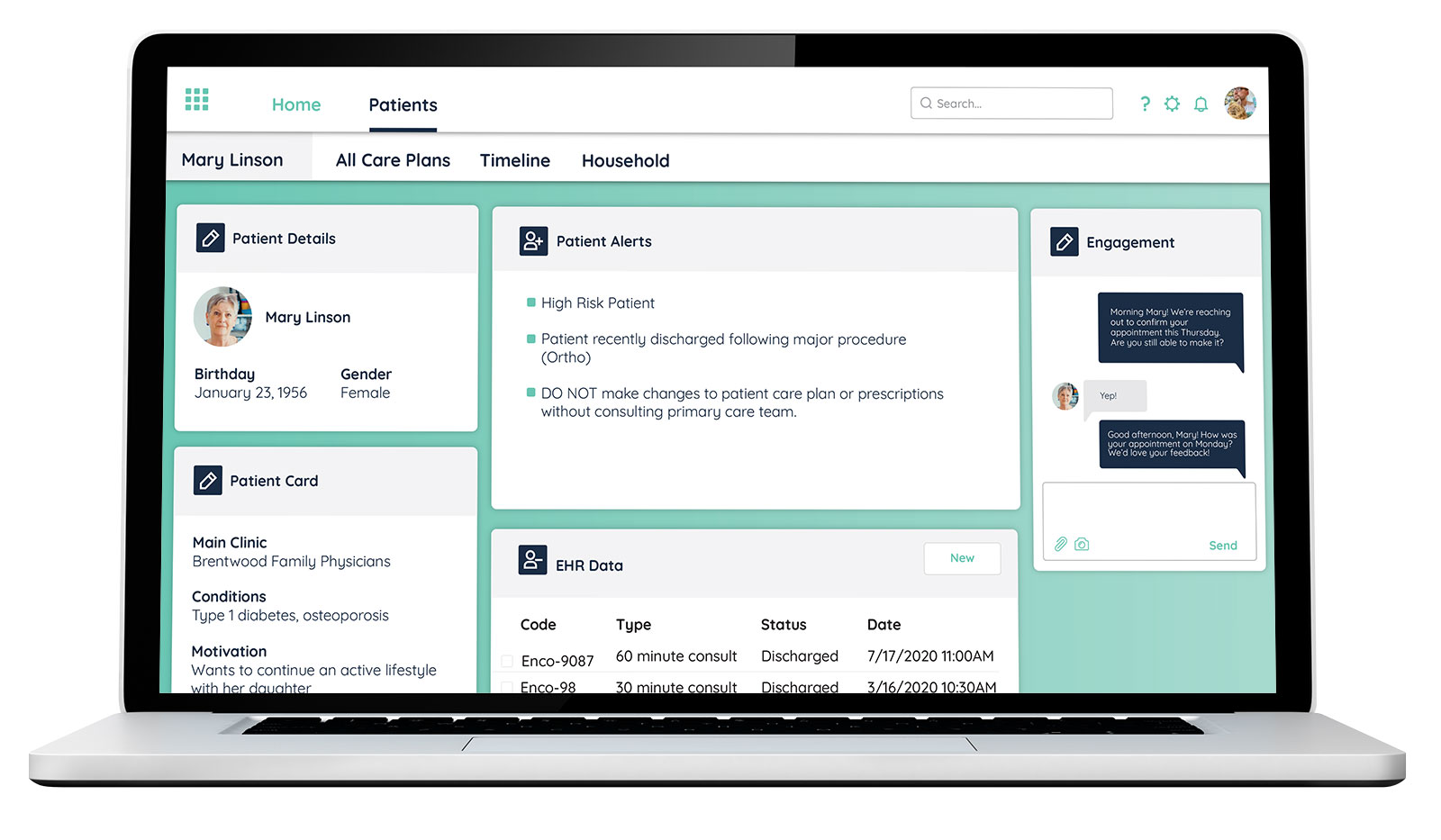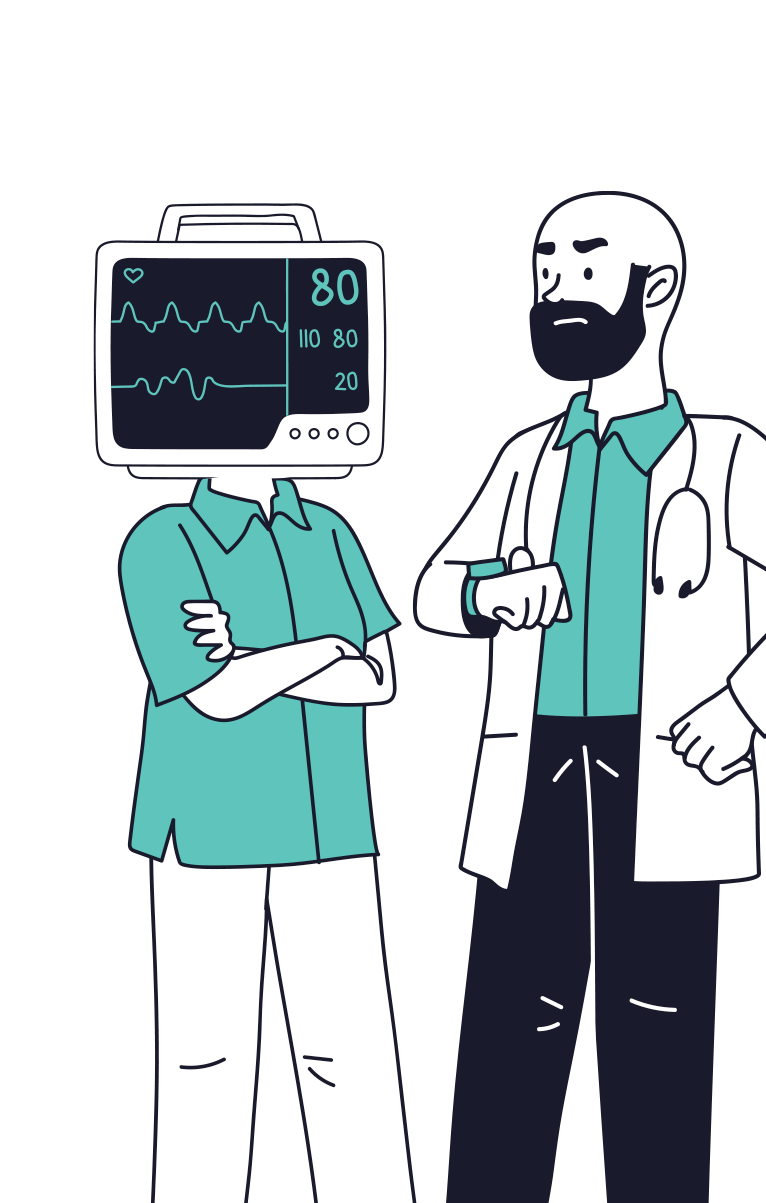Today, healthcare providers have more data than ever before. This helps them better understand, and help, their patients. Yet the true value of that data cannot be realized without the proper provider data management software. It can help teams create insightful action plans to improve the health and wellbeing of their patients. To optimize your patient data, you’ll want a CRM that offers a centralized, customizable platform that is designed to meet the needs of patients, healthcare providers, and payers.
Enter Salesforce Health Cloud. It’s the ideal solution to help healthcare providers and their teams optimize how they view patient data. Health Cloud offers a comprehensive view of members in a single, easily navigated dashboard, so healthcare providers, office staff, and support staff can find the information they need to help patients at different steps of their healthcare journey.

Helping Providers Optimize Appointments
Studies suggest that most U.S. physicians spend between 13 and 28 minutes with patients. When you consider doctors must take in an incredible amount of data and respond with actionable items, this isn’t a lot of time. On the other hand, it’s a perfect example of why provider data management is so crucial to physicians and other healthcare providers.
By using a platform like Salesforce Health Cloud, providers can see a comprehensive 360-degree view of the patient in one spot, without toggling between platforms. They can review past health history, current prescriptions, and various notes quickly, maximizing their time with patients.
Health Cloud can also aggregate data for a greater view, and with reporting abilities, providers can create user-friendly charts and graphics for quick visual reporting. This can also be especially helpful for sharing with patients, to help them better understand their progress.
Connecting Providers Across Networks
Many patients have more than one physician or healthcare provider to meet their and their families’ unique needs. An expectant mother may have a general practitioner, as well as her OB-GYN. A retiree who is in good health may have a primary care physician, as well as an orthopedic surgeon to help manage old sports injuries.
Multiple doctors are not uncommon. An estimated 40 million Americans have one or more chronic health conditions. These range from mild to more serious, but the fact remains: countless people look to a network of healthcare providers. That’s why it’s so important that your provider data management software be able to capture communications across a network of care.
What platform can handle this with ease? Salesforce Health Cloud. It can easily manage past and future visits, any notes about care plans and recommendations, and prescriptions. Armed with this knowledge, healthcare providers can work together toward the goal of coordinated care.
Empowering Office and Support Staff
Patients may spend the majority of their face-to-face time with their physician, but that is only one part of the provider-patient experience. Office and support staff make the first impression, both in the clinic and out. Provider service reps manage key online and phone communications, including scheduling and records management. It’s vital that they have the information they need at their fingertips to ensure transactions are smooth and efficient.
That’s why the dashboard interface on your provider data management software is so important. It should be well organized and include information such as insurance provider, appointment history, and contact information, so staff can assist patients quickly and efficiently. They should also be able to make changes as needed, too, for insurance purposes, and note the patient’s contact preference.
Your CRM should also integrate with patients’ EHRs. As we discussed in a previous blog, it’s not about EHR vs CRM…it’s about what they can do together. With this extra level of connectivity, patients and providers can message each other securely and conveniently. Patients may also order prescriptions or schedule appointments online. This helps patients stay more engaged in their own healthcare and helps build trust and loyalty between them and their healthcare team.
Keeping Patients Engaged in Their Healthcare
To keep patients even more engaged in their care, email automation is a benefit that you should consider when reviewing provider data management software. With email automation, patients can stay more involved in their care. They can be informed of upcoming events, including appointments and health seminars. Staff can review the email campaign’s performance to better understand what patients appreciate and want more of.
Salesforce Health Cloud integrates with Salesforce CRM to help personalize communication. With it, healthcare office staff can tailor relevant messages based on the patient’s interests and profile. So instead of getting impersonal messages that miss the mark, patients can receive messages that encourage and empower them to take a more vested role in their healthcare.
Salesforce Health Cloud integrates with Salesforce CRM to help personalize communication. With it, healthcare office staff can tailor relevant messages based on the patient’s interests and profile. So instead of getting impersonal messages that miss the mark, patients can receive messages that encourage and empower them to take a more vested role in their healthcare.
Email automation, and being able to access results easily, is also a boon for providers. For example, they can see that an email was sent and ask if the patient has had time to read it. It can help personalize the provider-patient experience. And in healthcare, personalization is what can set providers apart.
Penrod’s Final Take
In this digital, connected age, healthcare providers have access to a wealth of patient data, which they can use to help patients address their unique needs. But face-to-face time is often brief, so providers must make informed decisions quickly. By using a robust CRM configured with smart dashboards and key information readily accessible, providers can spend less time searching and more time focusing on what really matters—the patient.


